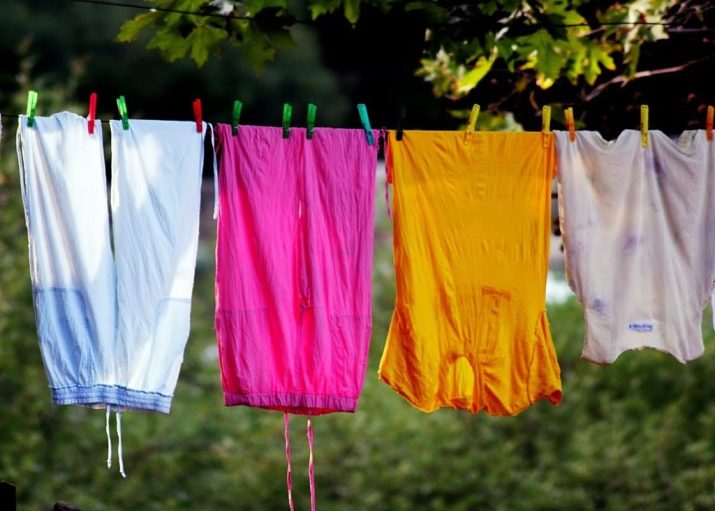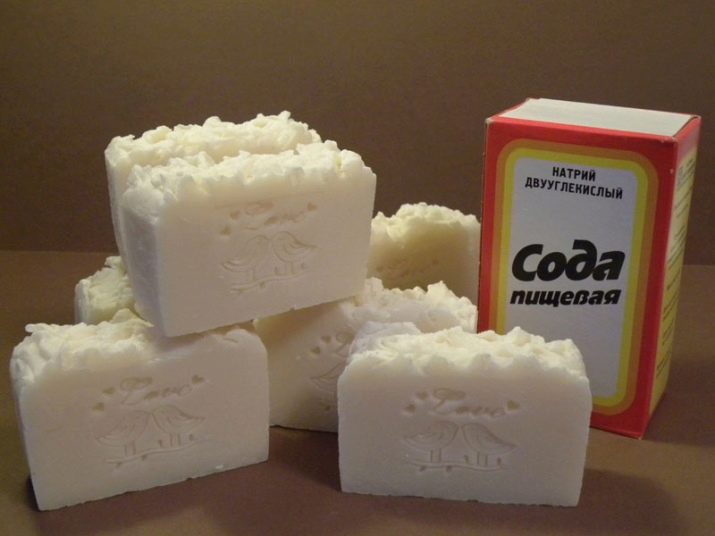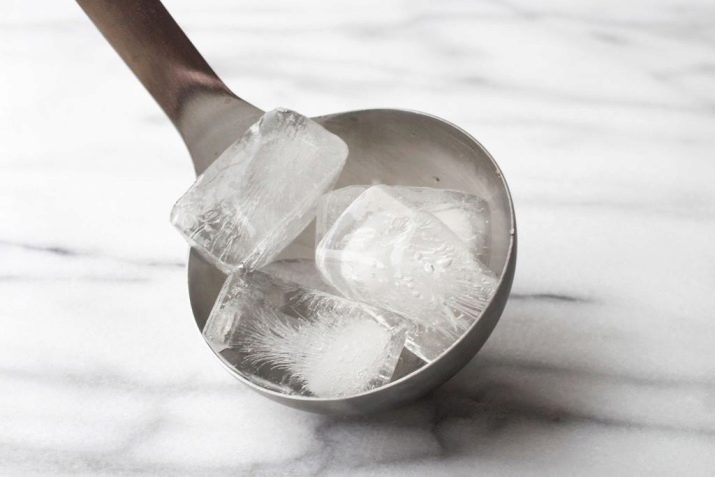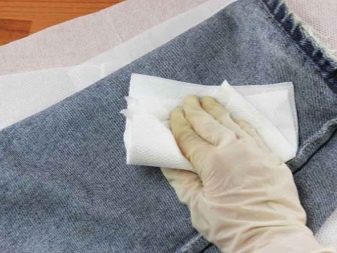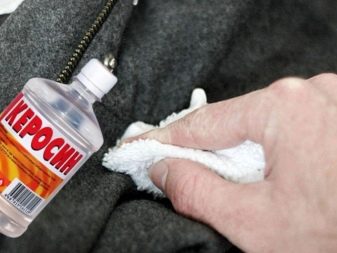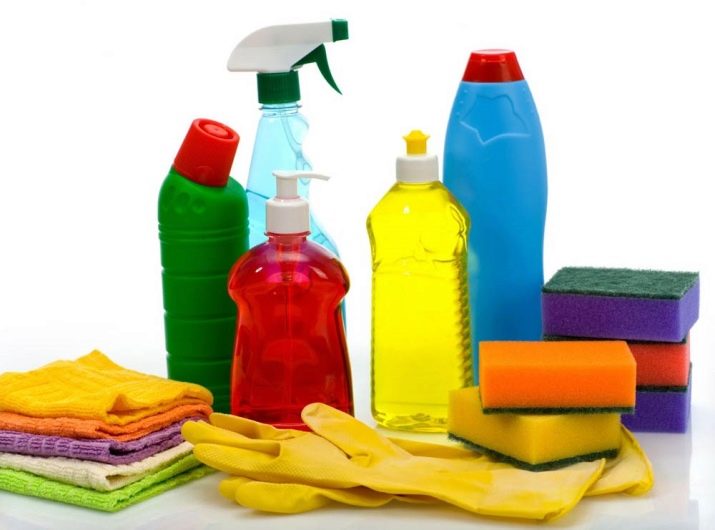Plasticine is quite a popular material for the creativity of children and their parents. The brighter its color, the better, because crafts are more colorful. And the more colorful the crafts, the more intense the dyes that manufacturers use, the more difficult it is to remove the plasticine stain if this sticky material was not where it should be (on the fabric of a T-shirt, shirt or trousers). Consider ways to remove clay from the surface of the fabric.
Required Ingredients
If you have small children, you just need to keep "in reserve" a few tips to eliminate various kinds of stains at home. This article will be useful material in your piggy bank. From it you will learn how to clean the clay from the clothes, as well as how to remove the stain left from the clay, because these processes are interrelated.
It is impossible to immediately wash the clay. Your actions involve several stages of getting rid of clothes from clay. They are to remove:
- large pieces of material by hand;
- product freeze;
- spot staining.
In order to bring the clothes in the original form, you can use:
- hydrogen peroxide solution;
- ammonia;
- vegetable oil;
- baking soda;
- laundry soap;
- kerosene.
Often, procedures for getting rid of clothing from unpleasant greasy plasticine stains are carried out by means of heating, stain removers or dry cleaning.
Initial action
Do not immediately run to the washing machine or wash the stain by hand. This can lead to a greater problem: clay will be absorbed into the fabric in greater quantities. To get started, try to remove the maximum amount of clay from clothing. If there are large, stuck pieces of clay that can be easily removed with your hands, remove them without using additional tools. Use your hands to remove only what is easily separated from the fabric.
If you have a smeared plasticine stain that has practically “grown together” with the fabric, do not try to scrape it with a knife or blade, otherwise you can ruin the fabric.
Remove clay
Consider a few methods of getting rid of textiles from sticky plasticine mass.
Method one
After manual disposal of the material from clay, it is worth freezing. Send the soiled garment to cool: place it in the freezer in a plastic bag. After about 40-50 minutes, you can get the thing back: the clay mass is frozen. Next, you need to act quickly, otherwise the clay will warm up and will again become a sticky substance. You need to take the knife and the blunt side of the blade to try to scrape off the frozen clay.
You should be able to do this without any problems, as the frozen clay loses its plasticity and hardens. The pressure on the blade must be moderate: the weaving of textile threads is not allowed.
Second way
It is possible to freeze the eaten material in another way. In order not to tamp down the crumpled thing in the freezer, you can do the following: spread the product on a flat surface, take a metal bowl and fill it with ice, then put it on a soiled piece of clothing, leave for a while, wait until the ice melts, remove the bowl. Now you can easily clear the clay.
Do not spoil the fabric, wielding blades, because this method does not freeze the material as if the thing was in the freezer.
Remove the stain
Now you face a new challenge: you need to remove the trace left on the clothes from the clay mass, which in appearance resembles a greasy stain. In fact, this is a trace of paraffin, which is a component of clay. To get rid of it and scrub, You can use one of the good old proven tools:
- Hydrogen peroxide solution or ammonia. A solution of hydrogen peroxide or ammonia is suitable for removing traces of clay, including white clothes. To prepare it, you will need 100 ml of warm water and a few (3-4) drops of ammonia (peroxide). In a ready solution, dip a piece of cotton or a cotton pad and blot the stains. Then you can send the item in the laundry.
- Vegetable oil. Another way to remove the paraffin stain is to wipe it with vegetable oil. The oil will help remove paraffin, but after that you will have to find a solution to remove the oil stain. If this nuance does not frighten you, you can use this advice: apply a small amount of vegetable oil on a napkin and blot the stain left by the clay. To clean the oil trail, soak the soiled item of clothing in a soap solution from dishwashing detergent, and then simply wash the item in the washing machine, selecting the mode according to the type of fabric.
- Baking soda. Baking soda can also help in removing the hated stain. First, take a basin, pour warm water into it and add a small amount of powder there: wet the stain in soapy water. After that, you need to sprinkle it with soda, thoroughly rubbing its powder into the surface of the cloth (an old toothbrush will do for this), leave for 15–20 minutes, and then rinse with warm water and wash it manually or in a washing machine. Do not rub powder too much: it can disrupt the structure of the fabric.
- Laundry soap. This tool to combat clay stains can be found in every home. You will need a fairly concentrated solution. From 1/3 of a piece of soap and 3 liters of warm water make a solution: rub the soap on a grater, pour it into warm water, mix and put soiled clothes into the soap mass. Leave it in the tank for 40-50 minutes. After this procedure, you can wash the thing.
- Kerosene. Another "grandmother's" means - kerosene gadgets. Everything is very simple: you need to take kerosene, dip a cotton swab or cotton pad in it and rub kerosene into the stain. After that, you need to leave the thing unattended for a while, let it “infuse” for a few minutes, then wash the soiled item of clothing. The smell of kerosene is vigorous, but it will disappear after washing with powder and conditioner. Be careful: do not wash this item with other clothes, it is better to lock the item soaked with kerosene manually first, and then send it to the washing machine, putting the machine on a gentle mode, focusing on the type of fabric.
Do not apply kerosene to white fabric: it can spoil the thing, forming a yellowish stain on the surface of the material.
The heating
You can use an iron, napkins or white paper to remove the stain from the clay. Spread the item on a flat surface, place a sheet of paper or a napkin on the stain and iron it. Replace the paper. When it gets dirty, iron it again. Turn the thing on the inside and do the same on the other side of the stain, and then just wash the thing.
Be careful not to damage the fabric. Use the average thermal mode of the iron: at an average temperature the stain will disappear, and the fabric will not suffer.
Industrial Stain Removers
If the above methods could not help you or do not want to waste time and effort on homemade recipes for getting rid of clay stains, you can use a special stain remover to enhance the effect of cleansing before washing. Now the market offers a wide range of these products for different types of fabric in color and composition.
Considering the composition and color of the affected thing, purchase a stain remover that is suitable for your particular case, and proceed based on the instructions for use.
Dry cleaning
The last way that our article will offer you is an appeal to professionals. There are two positive aspects to this method:
- Dry cleaners know exactly how to get rid of a stain. They will take all the trouble for you, you do not have to do this, though not difficult, but the process requires your time.
- Professionals know exactly how to clean a thing, removing clay and stain, without spoiling the fabric. In particular, you need to think carefully about taking advantage of this advice when it comes to delicate fabric and expensive stuff.
Recommendations
Plasticine is a rather tenacious substance due to its composition. From heat it becomes plastic and easily sticks to various kinds of tissues. It does not matter the manufacturer or the composition of the material of the brand: all species require accuracy in their work, even if their degree of plasticity is different.
Do not neglect the preliminary preparation for modeling. It is much better to prevent the appearance of unsightly stains than to eliminate them.
If the kid is engaged in creative work at home, change his clothes into clothes that it is not a pity to get dirty in case of plasticine embarrassment. If the child is engaged in modeling outside the home, prepare him with aprons and special sleeves with elastic bands that will save clothes from unforeseen circumstances. If the clay was in the wrong place (for example, on a favorite blouse or trousers of a child), do not tighten up with the elimination of the problem: immediately proceed to the elimination of the accident.
If you act in hot pursuit, you will have much more chances to wash off the stain, saving your favorite thing. If you postpone the removal of the stain for a while, there is a great risk that the stain will remain on the clothes. Teach your child neatness: it will help in the future to avoid these problems.
How to clean the fabric from clay, see the following video.


